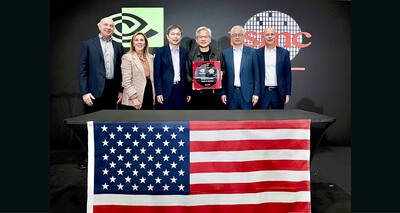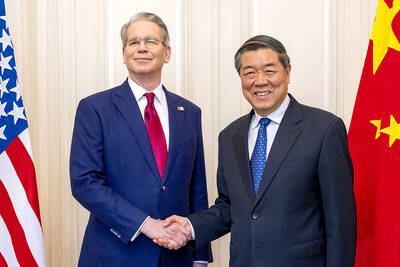Domestic companies plan to hire more staff by the end of next month than three months ago, but the number of new hires represents the lowest over the same period in three years, according to the Council of Labor Affairs’ latest survey.
The council’s survey of employers, conducted between July 23 and Aug. 10, showed that 22.4 percent of the 3,013 employers polled said they would increase their staff by Oct. 31 and only 5.82 percent planned to reduce hiring.
Based on the council’s poll of domestic companies with 30 or more employees, 65.61 percent said they would not change their level of recruitment through the end of next month. About 54,300 workers are expected to be hired by the end of next month, while 18,000 jobs will be eliminated, according to a statement released by the council.
By subtracting the number of employers planning to reduce staffing from the number planning to hire, the survey showed a net 36,300 new jobs would be created between Aug. 1 and Oct. 31, the council said.
However, that net increase is 26.06 percent lower than the 49,100 jobs in the previous three months and 43.09 percent less than the 63,800 jobs created during the same period last year, the council’s statistics showed.
“Taiwan’s labor market remains stable,” the council said in the statement. “However, the decline in new hires reflects weakening momentum in the nation’s exports amid the global economic slowdown. With employee wages remaining stagnant and rising prices affecting domestic consumption, companies have shown some reservations about further investment.”
Last month, the Directorate-General of Budget, Accounting and Statistics (DGBAS) slashed its forecast for GDP growth this year to 1.66 percent from the 2.08 percent it estimated in July, as the agency said that it expected exports to contract 1.72 percent for the whole of this year — the first contraction since the global financial crisis — and that private investment might fall 1.03 percent from last year, while private consumption looks to post a slight increase of 1.58 percent.
The council said the manufacturing sector was the biggest contributor, with a net increase of 14,800 new jobs, followed by the banking and insurance sector (5,000), wholesale and retail sector (4,700), transportation and logistics (2,800) and corporate support services (2,700).
The type of workers most in demand were technicians and assistance staff (17,300), followed by equipment operators and assemblers (10,900), specialists (2,800), service and sales representatives (2,200) and unskilled or manual workers (2,000), the survey showed.

Jensen Huang (黃仁勳), founder and CEO of US-based artificial intelligence chip designer Nvidia Corp and Taiwan Semiconductor Manufacturing Co (TSMC, 台積電) on Friday celebrated the first Nvidia Blackwell wafer produced on US soil. Huang visited TSMC’s advanced wafer fab in the US state of Arizona and joined the Taiwanese chipmaker’s executives to witness the efforts to “build the infrastructure that powers the world’s AI factories, right here in America,” Nvidia said in a statement. At the event, Huang joined Y.L. Wang (王英郎), vice president of operations at TSMC, in signing their names on the Blackwell wafer to

AI BOOST: Although Taiwan’s reliance on Chinese rare earth elements is limited, it could face indirect impacts from supply issues and price volatility, an economist said DBS Bank Ltd (星展銀行) has sharply raised its forecast for Taiwan’s economic growth this year to 5.6 percent, citing stronger-than-expected exports and investment linked to artificial intelligence (AI), as it said that the current momentum could peak soon. The acceleration of the global AI race has fueled a surge in Taiwan’s AI-related capital spending and exports of information and communications technology (ICT) products, which have been key drivers of growth this year. “We have revised our GDP forecast for Taiwan upward to 5.6 percent from 4 percent, an upgrade that mainly reflects stronger-than-expected AI-related exports and investment in the third

RARE EARTHS: The call between the US Treasury Secretary and his Chinese counterpart came as Washington sought to rally G7 partners in response to China’s export controls China and the US on Saturday agreed to conduct another round of trade negotiations in the coming week, as the world’s two biggest economies seek to avoid another damaging tit-for-tat tariff battle. Beijing last week announced sweeping controls on the critical rare earths industry, prompting US President Donald Trump to threaten 100 percent tariffs on imports from China in retaliation. Trump had also threatened to cancel his expected meeting with Chinese President Xi Jinping (習近平) in South Korea later this month on the sidelines of the APEC summit. In the latest indication of efforts to resolve their dispute, Chinese state media reported that

CHINESE EXPORT CURBS: A dispute between China and the Netherlands could halt chip supply, affecting vehicle production, US and European auto associations said Groups representing major automakers late on Thursday warned that a chip disruption stemming from a dispute between China and the Dutch government could quickly affect US auto production. Automakers and their suppliers received notice from chipmaker Nexperia (安世半導體) last week that it could no longer guarantee delivery of its chips, the European Automobile Manufacturers Association said, adding that manufacturing could be significantly disrupted. In the US, the Alliance for Automotive Innovation, which represents General Motors, Toyota, Ford, Volkswagen, Hyundai and nearly all other major automakers, urged a quick resolution. “If the shipment of automotive chips doesn’t resume — quickly — it’s going to